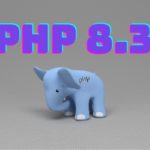At present, data reigns supreme in the digital landscape, and its interaction with cloud computing is revolutionizing how heavy-duty enterprises manage their information. This blog post will explore the significance of this relationship for heavy-duty enterprises by delving deep into its critical nature, showing how it enhances data management while streamlining operations and helping organizations use their data more effectively. If you are an enterprise solution architect or IT leader looking to maximize data strategies more effectively this article offers insight to understand its significance and optimize data strategies accordingly.
Understand data fabric in a cloud environment
The data fabric definition is simple. Data fabric is an architectural framework created to enable seamless data access across platforms and environments. It connects various data sources such as on-premises, hybrid, and multicloud infrastructures to create a centralized view of information assets for organizations, using this approach to increase accessibility as well as governance and security of large quantities of sensitive data.
At its core, data fabric aims to enhance data usability while the decreasing complexity associated with managing disparate data sources. For enterprise solution architects this means having tools available to them for creating intricate data models that accommodate diverse business units’ needs. By taking advantage of data fabric, IT leaders can ensure decision makers quickly access reliable insights, leading them towards making better strategic choices.
Data fabric becomes particularly vital in cloud environments, where organizations frequently encounter multiple service providers and data silos that require integration and management of multiple clouds simultaneously. Data fabric provides a coherent architecture for unifying all these clouds together to simplify how organizations manage their information landscape.
Cloud computing as an agent to expand data fabric
Cloud computing serves as an integral component of data fabric, providing enterprises with the infrastructure and resources necessary to efficiently manage large amounts of data. Thanks to its scalable computing power and storage capacities, cloud platforms enable enterprises to implement data fabric solutions tailored specifically to meet their evolving needs. Organizations can benefit from increased flexibility and cost efficiency by choosing to leverage the cloud for data management purposes. This makes it an attractive solution for managing large portfolios of information.
One of the key advantages of combining data fabric and cloud computing is accessing advanced analytics capabilities. Large enterprises can harness cloud-based tools for faster processing of large datasets. Solution architects then have access to tools that support real-time insights for quicker response to market changes or customer demands.
Cloud computing facilitates data governance by offering robust security measures and compliance features, such as GDPR and HIPAA regulations. Companies using these regulations to implement their data fabrics securely are especially important when they handle sensitive information.
Bridging data sources together
Integrating data fabric with cloud computing enables enterprises to connect various data sources into one consolidated environment for data management. Traditional storage solutions often lead to fragmented views of their data landscape. Data fabric provides a central framework for integration, enabling businesses to connect disparate sources seamlessly.
Solution architects play an essential role in developing data fabric strategies that leverage cloud computing. Through creating architectures that foster data collaboration across departments, solution architects ensure stakeholders have access to information at any time they require it. This can lead to enhanced productivity and more informed decision-making processes.
Enterprise IT leaders must take note of data quality when relying on integrated data sources. Data fabric solutions offer cleansing and validation processes that improve accuracy and reliability, making a valuable contribution towards effective analytics and reporting processes. Organizations investing in such frameworks stand better chances at realizing their goals.
Cloud environments offer opportunities for data modeling
Data modeling is an indispensable element of data management, especially when working within cloud environments. By developing clear models for their data storage and access processes across platforms, enterprises can better define how they structure, store, and access it. This is an especially vital function in large organizations that handle complex datasets that need an established foundation for their initiatives.
Solution architects must carefully design data models when integrating data fabric with cloud computing, taking into account its scalability and flexibility. This will allow organizations to adapt quickly to changing business requirements while still maintaining data integrity, while simultaneously providing seamless information flow between applications and services so stakeholders can quickly access any of their desired information without delays.
Collaboration on data fabric and cloud solutions
Collaboration is at the core of any effective enterprise data strategy. By integrating data fabric with cloud computing technologies, organizations can foster team and department-based collaboration that leads to improved communication and information sharing. This leads to more innovative solutions and streamlining processes.
Heavy-duty enterprises often involve many teams working on various projects. Utilizing data fabric and cloud solutions helps break down silos and foster collaboration. For example, marketing, sales, and product development teams can access real-time accessing all the same data so they can coordinate efforts more easily and make data-driven decisions.
Data fabric facilitates collaborative workflows that enhance productivity. For instance, enterprise solution architects can use it to design processes, allowing teams to contribute data models and analyses collaboratively. This encourages ownership and engagement from employees while unleashing the full potential of data assets within an organization.
Security and compliance in data fabric and cloud computing
Data fabric solutions provide increased security by offering centralized control of data access and governance. By setting strict access controls and tracking usage of sensitive information, enterprises can reduce the risk of data breaches or unintended access. Adding encryption or masking techniques further strengthens security measures for such information.
Compliance with relevant regulations is equally vital for heavy-duty enterprises, and data fabric can facilitate compliance by offering transparent data lineage and tracking capabilities that enable organizations to demonstrate accountability while complying with industry regulations. By harnessing cloud computing, enterprises can automate compliance checks and streamline reporting processes reducing internal teams’ burden significantly.
Conclusion
Data fabric and cloud computing play an essential role for heavy-duty enterprises looking to optimize their data strategies. By understanding how these technologies interplay, organizations can increase data accessibility, boost collaboration efforts, and promote better decision-making processes.
Data fabric and cloud computing solutions have become essential assets in an increasingly competitive business landscape, making their use non-negotiable for organizations seeking long-term success. Enterprise solution architects and IT leaders will find this post a helpful foundation for unlocking the data fabric’s full potential, opening new opportunities while positioning themselves for success for years to come.











Leave a Reply